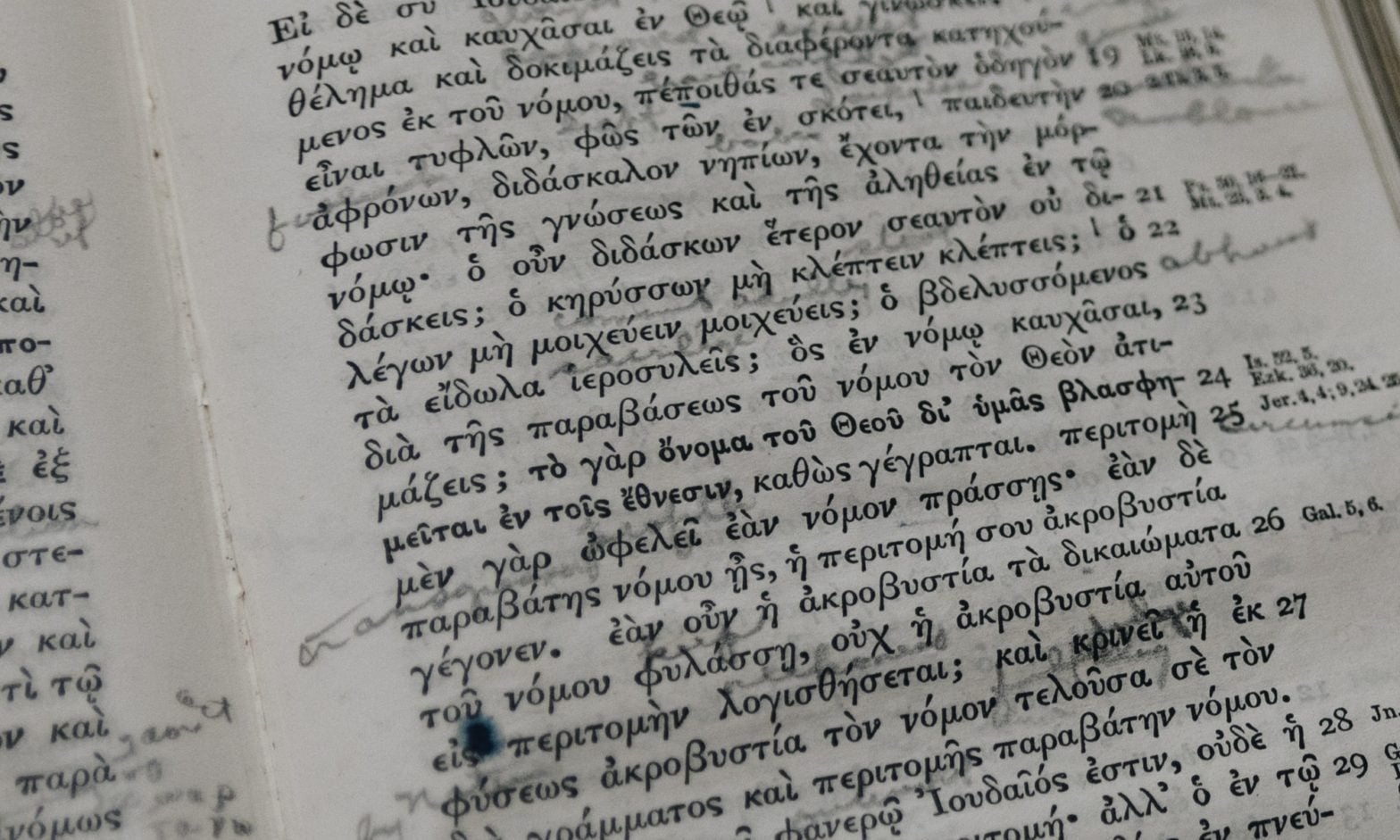You’re working through a passage in a critical edition of the Greek New Testament.1
You see some variations indicated in the apparatus. Only, for one of them, you’re confused about what the apparatus is saying about the reading of a particular manuscript.
You check the front matter for your Greek New Testament. You want to know if you’re missing or misinterpreting something in the apparatus.
As far as you can tell, you aren’t. You just aren’t exactly sure how to put together all the signs you see in the apparatus.
The commentaries and other resources you have on hand aren’t much help either.
What do you do next? The simplest solution might be to have a look at the manuscript you’re wanting to know more about.
Time to Check the Manuscript
If you try to read a Greek New Testament manuscript for yourself, you’d be right to come away with renewed appreciation for your printed, critical text.
Almost always, the critical apparatus makes it quite straightforward to see some of the different readings in different witnesses.
For this, New Testament students and scholars who don’t specialize in textual criticism are inexpressibly indebted to those who do. Critical editions of the Greek New Testament embody an inexpressible store of learned effort that’s been poured into their development.
Even so, you might sometimes not be exactly sure what the apparatus in that critical edition is telling you. And when that happens, it might be easiest to consult the cited manuscript.
Not so long ago, this would have required quite a bit of expense and travel. But now, it’s comparatively easy thanks to the excellent database provided by the Institut für Neutestamentliche Textforschung (INTF).
How to Check the Manuscript
If you’re coming from a critical edition in search of a manuscript scan, try starting with INTF’s online Liste. You can try starting elsewhere, but it’s probably easiest to begin here.
From the online Liste, there are various ways to find manuscript images. But one of the simplest to begin with involves 3 steps:
- Understanding INTF’s numerical document ID system,
- Finding the proper manuscript and page in INTF’s database, and
- Finding additional images for that page in that manuscript.
For more information on each of these steps, just click through the links above.
Manuscripts and Apparatuses
For now, if it seems a bit daunting to consult a manuscript scan, your intuition isn’t wholly misplaced.
By comparison with modern, printed, critical texts, manuscripts of the Greek New Testament are often “the wild west.”
But those manuscripts are about as “primary” as primary literature gets. And by comparison, even a critical apparatus is secondary commentary.
You might not be specializing in textual criticism. And in that case, you need to be comparatively more tentative about judgments you make based on the manuscript images you consult.
But let’s grant this. Let’s also grant that looking at scans of handwritten manuscripts can present some challenges and require some work.
Even so, you might well find these manuscripts can sometimes be more transparent than their apparatus commentaries.
Conclusion
In the end, the situation is not at all unlike the difference C. S. Lewis describes between old and new books, which I’ve paraphrased below as it applies to this topic:
There is a strange idea abroad among students that New Testament manuscripts should be read only by professional text critics and that the amateur should content himself with the modern critical editions. Thus I have found as a tutor that if the average student wants to find out something about the text of the New Testament, the very last thing he thinks of doing is to look up a given manuscript and read it. He would rather read some list of witnesses in a modern critical edition ten times as long. The error is rather an amiable one, for it springs from humility. The student is half afraid to meet one of the great manuscripts face to face. He feels himself inadequate and thinks he will not understand it. But if he only knew, a given manuscript, just because of its character as a given manuscript is sometimes much more intelligible than its modern commentary. The simplest student of the Greek New Testament will be able to understand, if not all, yet a very great deal of what the manuscript says. It has always therefore been one of my main endeavors as a teacher to persuade students that first-hand knowledge is not only more worth acquiring than second-hand knowledge, but is usually much easier and more delightful to acquire.2
Header image provided by Kelly Sikkema. ↩
Adapted from “On the Reading of Old Books,” in God in the Dock (affiliate disclosure), 200. ↩

Leave a Reply